by Admin | Jun 6, 2014 | News
(BGF) – China’s “nine-dashed line” maritime claims in the South China Sea has been a key source of disputes with its neighbors, Vietnam, the Philippines, Indonesia. M. Taylor Fravel, an Associate Professor of Political Science and member of the Security Studies Program at the Massachusetts Institute of Technology, talked to The Diplomat about China’s claim of South China Sea. Click here to read the full article or visit The Diplomat website.
Clarification of China’s Claim?
March 05, 2012 I By M. Taylor Fravel
(The Diplomat) – Are China’s South China Sea claims as expansive as some people claim? The Foreign Ministry tries to clarify.
Ambiguity about the extent of China’s maritime claims in the South China Sea has been a key source of concern in this dispute. In the 1990s, China issued a series of domestic laws detailing its maritime claims under the U.N. Convention on the Law of the Sea, including 12 nautical mile territorial seas and 200 nautical mile exclusive economic zones (EEZ). Nevertheless, Chinese maps continue to contain a “nine-dashed line” around the South China Sea. The line first appeared on an official map produced by the Republic of China in 1947. After 1949, China continued to use the line on its official maps, but never defined what the line included or excluded.
In a recent press conference, the Ministry of Foreign Affairs appeared to take an important step towards clarifying China’s claims in the South China Sea – and suggesting what the line might not mean.
First, the spokesperson, Hong Lei, distinguished between disputes over “territorial sovereignty of the islands and reefs of the Spratly Islands” and disputes over maritime demarcation. This affirms past statements, including a note to the United Nations in May 2011, that China will advance maritime claims that are consistent and compliant with UNCLOS. Under UNCLOS, states may only claim maritime rights such as an EEZ from land features like a nation’s coastline or its islands.
Second, and more importantly, the spokesperson further stated that “No country including China has claimed sovereignty over the entire South China Sea.” By making such a statement, this phrase suggests that the “nine-dashed line” doesn’t represent a claim to maritime rights (such as historic rights), much less a claim to sovereignty over the water space enclose by the line. More likely, the line indicates a claim to the islands, reefs and other features that lie inside.
To be sure, China could advance a large claim to maritime rights in the South China Sea from the islands and other features in the Spratly Islands. Although UNCLOS only permits states to claim a 200 nautical mile EEZ from islands that can sustain permanent human habitation, sovereignty over a single island can generate an EEZ of approximately 125,000 nautical miles.
Nevertheless, even articulation of a large but UNCLOS-compliant claim would offer several advantages in terms of dispute resolution. It would clarify where China’s EEZ claims from islands in the South China Sea overlap with the claims of littoral states from their coastlines. As a result, disputed and undisputed areas would be clearly identified. It would also allow states to invoke the dispute settlement mechanisms of UNCLOS, Part XV, which would a negotiated settlement to overlapping claims.
Of course, this recent statement doesn’t represent a full and complete definition of the nine-dashed line. Nevertheless, it does at least rule out one possible definition and provide an opportunity for other states to press China to further clarify its position.
by Admin | Jun 6, 2014 | News
(BGF) – The Strait Times reported Vietnam’s acquisition of more fighter weapons to counter a potential adversary of superior military capability. This initiative shows that Vietnam would be no pushover to try seizing the South China Sea. Click here to read the full article
Vietnam prepares to better protect its S. China Sea claims
January 10, 2012 by Robert Karniol
(The Straits Times) – Like China, Vietnam faces the same dilemma in seeking to counter a potential adversary of superior military capability.
Hanoi’s acquisitions of the Su-30MK multi-role fighter and the Gepard-class frigate are indicative of its A2/AD effort. Rather than looking at the numbers involved, consider the armament.
The fighter’s weapons fit is thought to include the Kh-59MK anti-ship cruise missile which has a 115-km range, while the frigate carries the Kh-35E anti-ship missile. The latter has an operational range of 130 km and can attack vessels of up to 5,000 tons.
Hanoi’s outstanding order for six Kilo- class submarines fits significantly into this mix as well. The weapons fit is expected to include the sea-skimming 3M-54 Klub anti-ship missile, ranging up to 300 km.
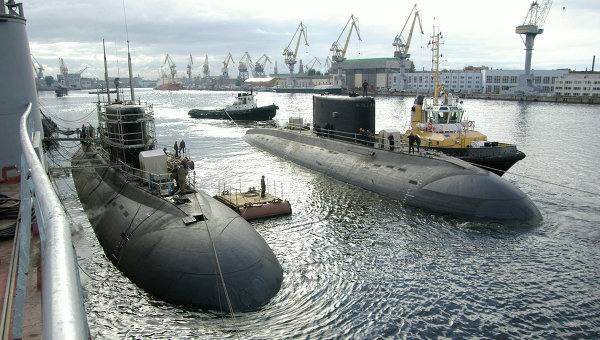
Meanwhile, land-based coastal defense has recently been strengthened through the Extended Range Artillery Munition obtained from Israel, a short-range ballistic missile effective beyond 150km, while air defense capabilities were bolstered by three sophisticated Vera passive radio locators from Czech Republic. Washington initially blocked the Vera sale but later reversed its decision.
These and similar initiatives show that Vietnam would be no pushover were the PLA to try seizing the South China Sea. Mirroring Beijing’s A2/AD strategy, Hanoi is introducing capabilities that threaten to make any Chinese adventurism there more complex and more costly than a simple comparison of air and naval assets suggests.
Click here to continue reading
by Admin | Jun 6, 2014 | News
(BGF) – The Wall Street Journal reported the fared tensions in the potentially resource-rich South China Sea as China warned its neighbors to stop looking for oil while Vietnam accused China of sabotaging a seismic survey boat. Beijing has contributed to mounting worries over the stability of the South China Sea through its efforts to extend the reach and influence of its military, alongside the hunger for natural resources.
Click here to read the full article or visit The Wall Street Journal website
Tensions Flare Over Disputed Asian Sea
June 10, 2011 | By James Hookway
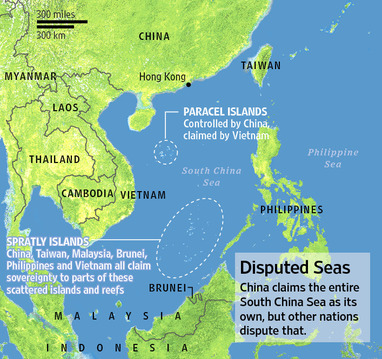
(Photo Credit: The Wall Street Journal)
BANGKOK (The Wall Street Journal) —Tensions in the potentially resource-rich South China Sea flared as Vietnam accused China of sabotaging a seismic survey boat while China warned its neighbors to stop looking for oil in the disputed territory without its permission.
Beijing’s efforts to extend the reach and influence of its military, alongside its hunger for natural resources, have contributed to mounting worries in recent months over the stability of the South China Sea.
The conflict has escalated into a series of clashes between Vietnamese exploration craft and Chinese patrol boats and a worsening war of words with the Philippines.
In the latest incident, Vietnam’s Foreign Ministry on Thursday said a Chinese fishing boat supported by two Chinese naval patrol craft cut a cable being used by a seismic survey craft operated by state-run energy company PetroVietnam.
Ministry spokeswoman Nguyen Phuong Nga said the Chinese boat’s actions were “completely premeditated” and “seriously violated Vietnam’s sovereign rights.”
China’s ambassador to the Philippines, Liu Jianchao, denied any wrongdoing in the area while also urging South China Sea claimants to stop drilling for oil and gas.
China fired back late Thursday, accusing Vietnam of “seriously infringing” China’s sovereignty and maritime interests. In a statement posted on the Chinese Foreign Ministry’s website, spokesman Hong Lei blamed Vietnam for Thursday’s incident, saying the Chinese fishing boat had been dragged for more than an hour after becoming entangled in the cable used by the Vietnamese vessel. “The Vietnamese vessel’s actions seriously threatened the safety of the Chinese fishermen,” Mr. Hong said.
Mr. Hong also reiterated Beijing’s claim that “as everyone knows, China possesses indisputable sovereignty” over the Spratlys and the maritime area around them.
Security analysts say the incident reflects a pattern of Chinese muscle-flexing in the disputed waters, which are claimed in whole or in part by Vietnam, the Philippines, Taiwan, Brunei and Malaysia in addition to China, which considers the entire South China Sea as its sovereign territory.
Click here to continue reading
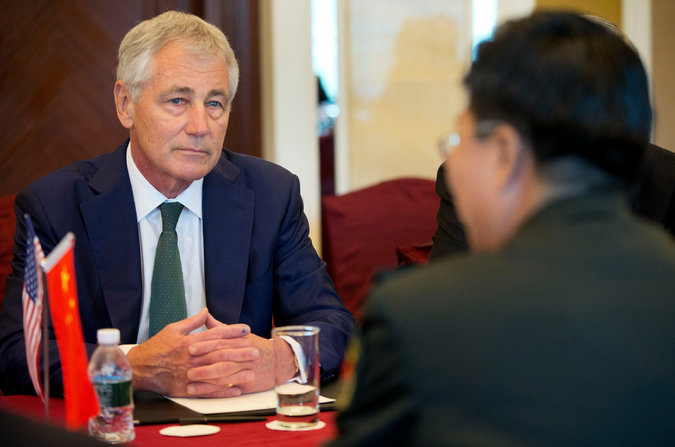
by Admin | Jun 2, 2014 | News

(Photo Credit: Pablo Martinez Monsivais)
(BGF) – Recently, China’s Lt. Gen. Wang Guanzhong accused the United States and Japan of attempting to sow controversy and incite tensions in Asia. General Wang’s comments came in reaction to speeches by U.S. Secretary of Defense Chuck Hagel and Japanese Prime Minister Shinzo Abe at a conference of military leaders from around the world. As evidenced by General Wang’s reaction, China perceived the speeches as an indication that the U.S. and Japan are trying to encourage regional stability so that the U.S. can maintain its military dominance in the Asia-Pacific Region. Click here to read the full article or visit The New York Times‘ website.
China Accuses U.S. and Japan of Incitement
By Helene Cooper
SINGAPORE — China struck back harshly at the United States and Japan on Saturday, as a senior Chinese military official accused Defense Secretary Chuck Hagel and Prime Minister Shinzo Abe of Japan of acting in concert to sow controversy and division in the Asia-Pacific region.
Speaking to reporters at a conference here of senior military officials from around the region, Lt. Gen. Wang Guanzhong, the deputy chief of staff of the People’s Liberation Army, characterized a speech on Saturday morning by Mr. Hagel, which followed one by Mr. Abe on Friday night, as “full of threats and intimidating language,” according to Chinese news media outlets.
General Wang seemed especially annoyed that Mr. Hagel, who accused China of coercive tactics in its many maritime disputes with its neighbors, had made his accusations at a conference about regional cooperation.
“Secretary Hagel, in this kind of public space with many people, openly criticized China without reason,” General Wang said. “Secretary Hagel’s speech is full of encouragement, incitement for the Asia region’s instability giving rise to a disturbance.”
Click here to continue reading.
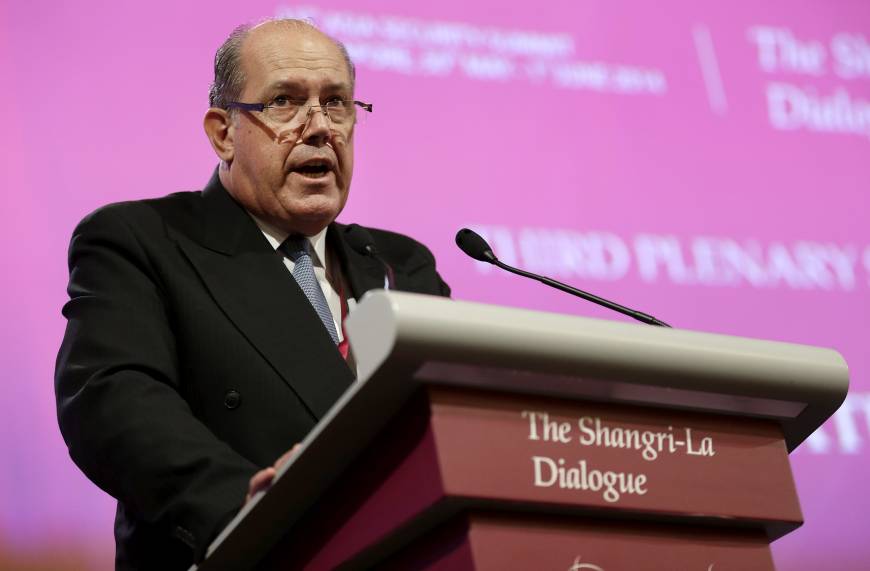
by Admin | Jun 4, 2014 | News

(Photo Credit: The Japan Times)
(BGF) – According to The Japan Times Australian Defense Minister David Johnston has backed U.S. Defense Secretary Chuck Hagel’s statement that China’s actions in the South China Sea are ‘destabiilizing’. Secretary Hagel’s comments were made at the recent ‘Shangri-La Dialogue’. When asked whether he supported Secretary Hagel’s comments, Secretary Johnston replied: “I do to the extent that it is destabilizing”. Click here to read the full article or visit The Japan Times‘ website.
Australia Backs U.S. Comments on China’s ‘Destabilizing’ Acts
SYDNEY – Australian Defense Minister David Johnston has backed comments by his United States counterpart, Chuck Hagel, accusing China of “destabilizing” actions in the South China Sea.
Speaking in Singapore on Saturday, Hagel accused China of a number of alleged infractions, including against the Philippines and Vietnam, the two most vocal critics of Beijing’s territorial claims.
“In recent months, China has undertaken destabilizing , unilateral actions asserting its claims in the South China Sea,” the U.S. Secretary of Defense told the annual “Shangri-La Dialogue.”
In opening the forum, Prime Minister Shinzo Abe urged countries to respect the rule of law, in apparent reference to perceived Chinese aggression in the South and East China seas.
Johnston told the Sydney Morning Herald, in an interview from Singapore published Monday, that he supported their view.
“The U.S., Australia and Japan are very concerned that unilateral action is destabilizing the region of the South China Sea particularly, and the East China Sea.”
Click here to continue reading.
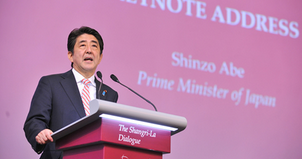
by Admin | Jun 1, 2014 | News

(Photo Credit: The IISS Asia Security Summit)
(BGF) – The IISS Asia Security Summit has posted Japanese Prime Minister Shinzo Abe’s keynote address from the Shangri-La Dialogue 2014 on their website. An excerpt of the keynote address is provided below. Click here to read the full keynote address or visit the IISS’s website.
Introduction
Your Excellency Mr. Lee Hsien Loong, Director-General Dr. John Chipman, Ladies and gentlemen, “Peace and prosperity in Asia, forevermore.” In order to make that a reality, what should Japan do and how should Japan contribute? That’s what I am standing here to speak about.
I think all of us in the room here share a common mission. The mission is one of pursuing better living standards and economic prosperity. It’s a mission of bringing into full bloom the latent potential of this great growth centre and the people living there, stretching from Asia and the Pacific to the Indian Ocean. We must build and then hand over to the next generation a stage on which each and every individual can prosper still more and certainly benefit from the fruits of growth.
“Asia” is a synonym for “growth”and another name for “achievement.”
Take TPP. The Trans Pacific Partnership will surely bring an overwhelming economy of scale to the Asia Pacific economies. Just as a rocket picks up even greater acceleration in its second and third stages, the RCEP and the FTAAP as it were, the momentum sparked by the TPP will expand our free and creative economic sphere, enabling us to soar even higher, and to propel the world economy forward.
And just for Japan to seek a winwin synergy with the growing Asia Pacific region, my economic policy is now advancing at full throttle.
If you imagine how vast the Pacific and Indian Oceans are, our potential is exactly like the oceans, i.e., limitless, isn’t it?
In order to have the generations of our children and our children’s children share in this bounty, it’s absolutely imperative that we make peace and stability, something absolutely rock-solid.
To achieve this, all countries must observe international law. Ladies and gentlemen, Japan will offer its utmost support for the efforts of the countries of ASEAN as they work to ensure the security of the seas and the skies, and thoroughly maintain freedom of navigation and freedom of overflight.
Japan intends to play an even greater and more proactive role than it has until now in making peace in Asia and the world something more certain.
As for Japan’s new banner of “Proactive Contribution to Peace,” Japan already enjoys the explicit and enthusiastic support of the leaders of our allies and other friendly nations, including every leader of ASEAN member countries as well as the leaders of the United States, Australia, India, the U.K, France and others.
So let me just repeat. Japan for the rule of law. Asia for the rule of law. And the rule of law for all of us. Peace and prosperity in Asia, forevermore. That’s what I wish to state to you today.
My perception of the circumstances
May I now tell you firstly how I perceive the situation that surrounds us in the region.
This region has achieved tremendous growth in the span of a single generation. However, a large and relatively disproportionate amount of the fruits of that growth is being allocated to military expansion and arms trading. To me, this is extremely regrettable. We also find ourselves facing the threat of weapons of mass destruction and attempts to change the status quo through force or coercion. Clearly there exist elements that spawn instability. And yet nowhere do we find a need to be pessimistic. That’s my approach.
Recently President Barack Obama of the United States and I mutually reaffirmed that the U.S.-Japan Alliance is the cornerstone for regional peace and security.
President Obama and I also mutually confirmed that the United States and Japan are strengthening trilateral cooperation with likeminded partners to promote peace and economic prosperity in Asia and the Pacific and around the globe.
When Australian Prime Minister Tony Abbott visited Japan at the beginning of April, we reaffirmed this exact stance, namely that in security affairs, we will further the trilateral cooperation among Japan, the U.S., and Australia. We clearly articulated to people both at home and abroad our intention to elevate the strategic partnership between
Japan and Australia to a new special relationship.
In India, Mr. Narendra Modi has become Prime Minister through another free and fair election. I am absolutely certain that when I welcome Prime Minister Modi to Tokyo, we will successfully confirm that Japan-India cooperation, as well as trilateral cooperation including our two countries, will make the “confluence of the two seas,” that is the Pacific and Indian Oceans, peaceful and more prosperous.
Last year, I visited all ten ASEAN member countries, and my determination grew increasingly firm with each country I visited.
This is because these visits taught me that we share common groundwork regarding our commitment to valuing the rule of law, and that we enjoy a consensus in our respect for freedom of navigation and freedom of overflight.
Indeed, in most of the countries of the region, economic growth has steadily brought freedom of thought and religion and checks and balances to the political systems, even though the speed of these changes varies from country to country.
The sheer idea of the rule of law, which is one great pillar for human rights, has taken deeper root.
Freedom, democracy, and the rule of law, which undergirds these two, form the Asia-Pacific’s rich basso continuo that supports the melody played in a bright and cheery key. I find myself newly gripped by that sound day after day.
The importance of international law
I have now shared with you how I perceive the circumstances that surround us.
Now, my first central point for today, that is that we must observe international law. International law prescribes the order governing the seas. Its history is long indeed, stretching back to the days of ancient Greece, we are told. By Roman times, the seas were already kept open to all, with personal possession and partitioning of the sea prohibited.
Ever since what is known as the Age of Exploration, large numbers of people have come together by crossing the seas, and marine-based commerce has connected the globe.
The principle of freedom on the high seas came to be established, and the seas became the foundation for human prosperity.
As history moved on, the wisdom and the practical experiences of a great many people involved with the sea, who were at times literally caught up in rough and raging waves, accumulated into common rules. This is what we now know as the international law of the seas.
This law was not created by any particular country or countries, nor was it the product of some sort of group. Instead, it is the product of our own wisdom, cultivated over a great many years for the well-being and the prosperity of all humankind.
Today, the benefits for each of us lie in the seas from the Pacific to the
Indian Oceans being made thoroughly open, as a place of freedom and peace.
All of us should find one common benefit in keeping our oceans and skies as global commons, where the rule of law is respected throughout, to the merit of the world and humankind.
The rule of law at sea: Three principles
Now, when we say “the rule of law at sea” — what exactly do we mean in concrete terms? If we take the fundamental spirit that we have infused into international law over the ages and reformulate it into three principles, we find the rule of law at sea is actually a matter of common sense.
- The first principle is that states shall make and clarify their claims based on international law.
- The second is that states shall not use force or coercion in trying to drive their claims.
- The third principle is that states shall seek to settle disputes by peaceful means.
So to reiterate this, it means making claims that are faithful in light of international law, not resorting to force or coercion, and resolving all disputes through peaceful means.
So that is all about common sense, pure and simple. And yet these very natural things must be emphasized.
I urge all of us who live in Asia and the Pacific to each individually uphold these three principles exhaustively.
Take a look at Indonesia and the Philippines. They have peacefully reached agreement of late on the delimitation of their overlapping EEZs. I welcome this as an excellent case in point that truly embodies the rule of law.
Ladies and gentlemen, my government strongly supports the efforts by the Philippines calling for a resolution to the dispute in the South China Sea that is truly consistent with these three principles. We likewise support Vietnam in its efforts to resolve issues through dialogue.
Movement to consolidate changes to the status quo by aggregating one fait accompli after another can only be strongly condemned as something that contravenes the spirit of these three principles.
Would you not agree that now is the time to make a firm pledge to return to the spirit and the provisions of the 2002 Declaration on the Conduct of Parties in the South China Sea that all concerned countries in the Sea agreed to, and not to undertake unilateral actions associated with a permanent physical change?
The time to devote our wisdom to restoring peaceful seas is now.
Click here to read the full keynote address.
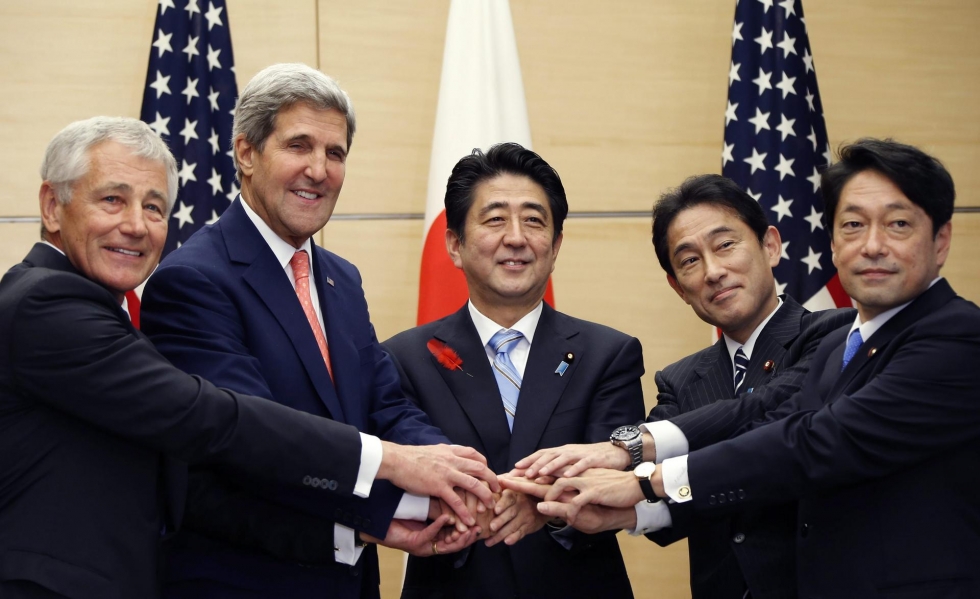
by Admin | May 31, 2014 | News

(Photo Credit: EPA)
(BGF) – This article, by Helene Cooper and Jane Perlez for The New York Times, discusses China’s actions and the implications for the Obama Administration’s re-balancing toward Asia. As the authors note, China’s actions indicate that China is testing U.S. alliances in the region with countries such as Japan and the Philippines, perhaps in an effort to get an increasingly inward-looking United States to back-off from the territorial disputes in Asia and relinquish its position of power in the region. This would allow China to assume the position of the unchallenged power in Asia. Click here to read the full article or visit The New York Times‘ website.
U.S. Sway in Asia Is Imperiled as China Challenges Alliances
By Helene Cooper and Jane Perlez
SINGAPORE — The Obama administration’s three-year-old plan to shift its foreign policy focus to Asia was supposed to shore up interests in a critical region, push new free trade pacts and re-establish United States influence as a balance to a growing China, after a decade of inattention.
But as Secretary of Defense Chuck Hagel visited this city-state for a security conference with all of the interested parties on Friday, that much-vaunted Asia policy appeared to be turning into more of a neighborhood street fight, with the United States having to simultaneously choose sides and try to play the role of referee.
All around Asia, China is pushing and probing at America’s alliances, trying to loosen the bonds that have kept the countries close to Washington and allowed the United States to be the pre-eminent power in the region since World War II.
In just the past week, China traded punches with Vietnam and Japan. A Chinese fishing vessel rammed and sank a Vietnamese fishing boat on Monday near a Chinese deepwater oil rig that was placed in disputed waters off the coast of Vietnam. That confrontation followed a close encounter last Saturday in which two pairs of Chinese fighter jets flew close to Japanese surveillance and electronic intelligence planes, in disputed airspace claimed by both countries.
By itself, neither encounter rises to the level of the trans-Pacific standoff that occurred in the East China Sea last year after China asserted military authority over airspace that included uninhabited islands claimed by Japan.
But taken together, those episodes form a pattern of escalating maritime and air tensions in the Pacific that have frustrated and worried American officials.
In his strongest words yet on the territorial disputes, Mr. Hagel on Saturday morning implicitly accused China of “intimidation and coercion” as he delivered his keynote address to the conference. China has called the South China Sea “a sea of peace, friendship and cooperation,” Mr. Hagel said. “But in recent months, China has undertaken destabilizing, unilateral actions asserting its claims in the South China Sea.”
China’s goal is to show Washington that if it maintains alliances in Asia, it risks a fight with Beijing, said Hugh White, a former senior Australian defense official who worked closely with Washington and is now professor of strategic studies at the Australian National University.
“China is deliberately doing these things to demonstrate the unsustainability of the American position of having a good relationship with China and maintaining its alliances in Asia, which constitute the leadership of the United States in Asia,” Mr. White said.
China is betting that America, tired and looking inward, will back off, he said, eroding its traditional place of influence in Asia and enhancing China’s power.
Click here to continue reading.

by Admin | Jun 1, 2014 | News
CONTACT: Elliot W. Salloway
Boston Global Forum
[email protected]
May 29, 2014
Boston Global Forum announces new Global Art Competition; Seeks submissions relevant to Crises in Asia.
Cambridge, MA – The Boston Global Forum (BGF) is proud to announce its new annual virtual contest, the Global Art Competition, which looks to present art as an instrument of communication to stimulate awareness and discussions among people and professional artists around the globe to answer the question: “Can Wars between nations be prevented?” Through the arts, we seek to promote understanding and mutual respect among nations.
The 2014 Global Art Competition calls all artists to submit original artwork in the form of photography or multimedia that answers the question: “Can Wars between nations be prevented – with particular reference to the current issues between Vietnam/Japan/Philippines and China?” The virtual contest will take place via Instagram and be judged by the world community. In addition, a BGF appointed panel of international jurors will review the top prospects and make the final judgments. Entries will be evaluated on the following criteria: creativity, composition, theme, technique, and issue impact.
BGF invites all people from all regions to participate in the online competition – and encourages citizens of the nations directly impacted from the current crises in the Asia Pacific to submit their art and participate in the voting process. There will be 10 winners in each category – photography and multimedia art – and all the art work entries will be judged using the same aforementioned criteria. The winners will be announced on September 30,2014 by the Boston Global Forum art team, and all will be previewed on October 3, 2014, at the historical Loeb House at Harvard University and honored and archived at the Boston Global Museum. BGF invites the global community to attend in person or view online the Award ceremonies and exchange wishes for peace and mutual understanding between nations.
For the selected artists this is an opportunity to have their work appreciated by the entire world.
The Competition details are as follows:
Contest Period:
The contest begins on 6/1/2014 and ends on 9/13/2014.
Who can enter:
The contest is open to all people in all countries.
How to enter:
The contest will be conducted virtually with all entries submitted to @BostonArtComp via Instagram using #CrisisAsia.To enter this contest, all participants are encouraged to submit his/her own photography or multimedia artwork (The photographs can be images of your own original paintings also). Be creative and use your imagination with particular reference to the current issues between Vietnam/China; Japan/China; and the Philippines/China. You are required to submit no more than three photos or multimedia files to Instagram.
Conditions
BGF shall not be responsible for any loss or damage that may occur by entering this contest and the BGF reserves the right to make changes to the rules of the contest without prior notification. For more information, the media can contact the event organizer direct at [email protected].
####
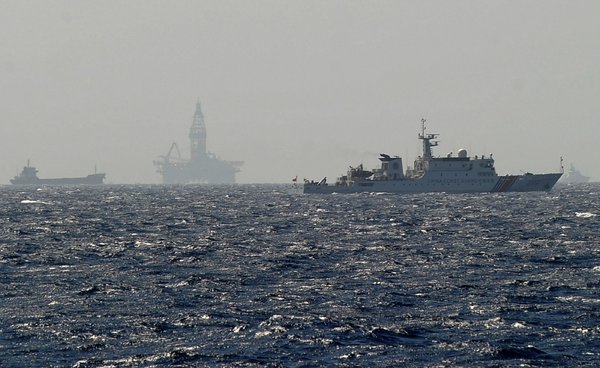
by Admin | May 29, 2014 | News

(Photo Credit: Hoang Dinh Nam/Agence France-Presse — Getty Images)
(BGF) – Yesterday, May 27, 2014, a Vietnamese fishing vessel was sunk in the vicinity of China’s contested oil rig in waters claimed by both China and Vietnam. The story was covered by Jane Perlez for The New York Times. According to Perlez, the Vietnamese vessel allegedly sank after being rammed by a Chinese vessel approximately 17 miles from the oil rig. The sinking of the vessel has only further enflamed the tensions between the two countries. China alleges that the Vietnamese fishing vessel was the aggressor and was ramming a Chinese vessel. This sparked a barage of nationalistic comments on Chinese social media. Additionally, a woman in Vietnam recently set herself on fire, and later died, in Ho Chi Minh City in protest of China’s oil rig being placed in waters claimed by Vietnam. The tensions between China and Vietnam have been continuing to escalate in recent months. Click here to read the full article or visit The New York Times‘ website.
China and Vietnam Point Fingers After Clash in South China Sea
By Jane Perlez
BEIJING — Tensions in the South China Sea escalated sharply on Tuesday as China and Vietnam traded accusations over the sinking of a Vietnamese fishing vessel in the vicinity of a Chinese oil rig parked in disputed waters off Vietnam’s coast.
The sinking further aggravated the worsening diplomatic and economic frictions between China and Vietnam, whose relations have plummeted to the worst point in decades after anti-Chinese riots two weeks ago that killed at least four people and injured more than 100 in Vietnam. China evacuated several thousand workers from Vietnam last week.
In the latest incident, a Chinese vessel rammed and sank a Vietnamese fishing boat about 17 nautical miles southwest of the oil rig on Monday afternoon, the state-run Vietnamese television network, VTV1, reported. All 10 crew members were rescued, the network said.
But China labeled Vietnam as the aggressor, with the Chinese state-run news agency, Xinhua, saying the Vietnamese fishing boat “capsized when it was interfering with and ramming” a Chinese fishing vessel from Hainan, a province of China. Then China accused Vietnam of sabotage and interfering with the operations of the oil rig, which has become a flash point ever since Vietnam learned that the Chinese had anchored the rig in waters contested by both nations.
At sea, armadas from both countries are jousting as the Chinese try to protect the $1 billion oil rig operated by the China National Offshore Oil Corporation, known as Cnooc.
Chinese and Vietnamese boats have rammed each other in the area around the oil rig, and the Chinese have acknowledged that they used water cannons to keep the Vietnamese away from the rig, which stands as tall as a 40-story building.
The rig arrived in the waters off the Paracel Islands, which are claimed by both China and Vietnam, on May 1, a move that showed China was trying to establish its control of the waters without consulting other claimants.
Click here to continue reading.







